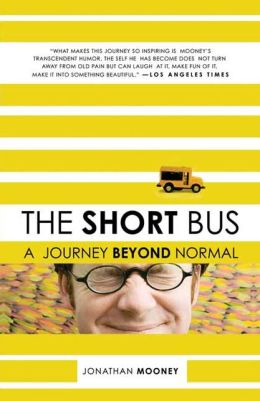Background: The “ecojustice with/in disability studies” affinity group grew out of shared interests at the SEMIS summer institute. The group looks at the intersection and effect of attitudes towards human animals, nonhuman animals, and plants. The premise is that underlying viewpoints transcend the object. In other words, how I feel about human animals affects how I feel about plants and nonhuman animals.
Me: I am a caring seeker of wisdom. I strive to be in the present, aware of the beauty around me. I accept nonlinear thought. I believe, “it is better to learn how to fish together than to teach someone how to fish.” I take a long, fluid view of time, and remind myself that we are all in this together, trying to be happy. I teach elementary special education, and will be facilitating this book club discussion.
Book Club: We decided to focus our conversation through a book club. We are reading “The Short Bus” by Jonathan Mooney. We will follow Jonathan’s journey uncovering “normal,” and reflect on the hidden assumptions and prejudices we live by, with, and in. I believe the existence of normalcy creates hierarchies, power structures, privilege, and prejudice. People on the fringes of normalcy are often labeled with disabilities, and discriminated against based on socially constructed differences. This is the dominant story, but it is not the only story. Do you believe in “normal?” What does it look like? What is a world void of normal like? How do your views affect your beliefs about ecojustice?

Ground rules: Given the format, please keep your initial posts to under 500 words and your comments on others’ posts to less than 250 words. As much as possible avoid jargon that might inhibit access to your thinking. Try to be specific and clear with your words.
Reflection questions: What moments in the book raised interesting questions we might discuss? What was a powerful moment/idea from the book that you’d like other people’s perspectives on?
Guest blogpost by:
Kevin Dorn

Quick introduction: I’m a Professor of Special Education at EMU, where I teach about disability studies, families, and the failure of special education. I’ve written some books, including Whatever Happened to Inclusion? The Place of Students with Intellectual Disabilities in Education (2010); Both Sides of the Table: Autoethnographies of Educators Learning and Teaching With/In [Dis]ability (2013); and Disability and Diversity: An Introduction (2014). For almost 25 years I’ve worked as a disability rights activist; currently, I’m the Treasurer of the Society of Disability Studies. I identify as a disabled person, and am a white, middle-class man.
This book is a very accessible entry into ideas that folks in the world of disability studies have long known, thought, and talked about. I wish I could say there were grand aha moments for me, though – there weren’t really new ideas laid out here. That being said, the book was written in a way that should make the ideas here open and available to those not familiar with disability studies, and puts a human face on those ideas.
Some (not all) of my favorite quotes (parentheses have page numbers):
“Disability is inherently a negation… people with disabilities stand more for what they are not than what they are… a negation that calls into being… the normal” (27-28).
“Normalcy… is first and foremost an idea that arises from statistics” (33).
“Blaming kids for their academic failures leaves our cultures definition of intelligence and learning unquestioned. Blaming defective neurology… keeps parents focused on the needs of their individual… child, not systemic reform for all kids” (47).
“…there are two fundamental paradigms for controlling deviance in our culture. In the model of the leper, the deviant is exiled from the community… the second, the truly defining model for our culture, is the model of the plague. In the plague model the sick are constantly being watched” (81).
“Eugenics was hardly a fringe operation. Men [sic] of all political stripes supported it. Nor was it a pseudoscience that existed on the margins… there were many eugenics departments at major universities… Eugenics-oriented scientists sat on major boards and comprised the leadership of professional scientific organizations” (125).
“…fifteen states still have laws permitting the involuntary sterilization of ‘defectives’… (126).
“In 1973… the American Association on Mental Deficiency ‘changed the criterion for mental retardation from one to two standard deviations’ of ‘… IQ.’ …thousands of people… woke up one day and were no longer retarded” (153).
“The human form and experience is defined by variance” (166).
“…the dominant model of an American citizen is to consume, produce, and strive… we have very little tolerance for individuals that don’t fit this definition of a meaningful life” (193).
“When we are together… we become more of who we already are” (193).
“…there is no hierarchy of human worth” (198).
“Everyone is worthwhile. Disability and normalcy are ideas we create as a culture… and something we can transform” (259).
I have more to say, but have kept this to the 500 word limit.